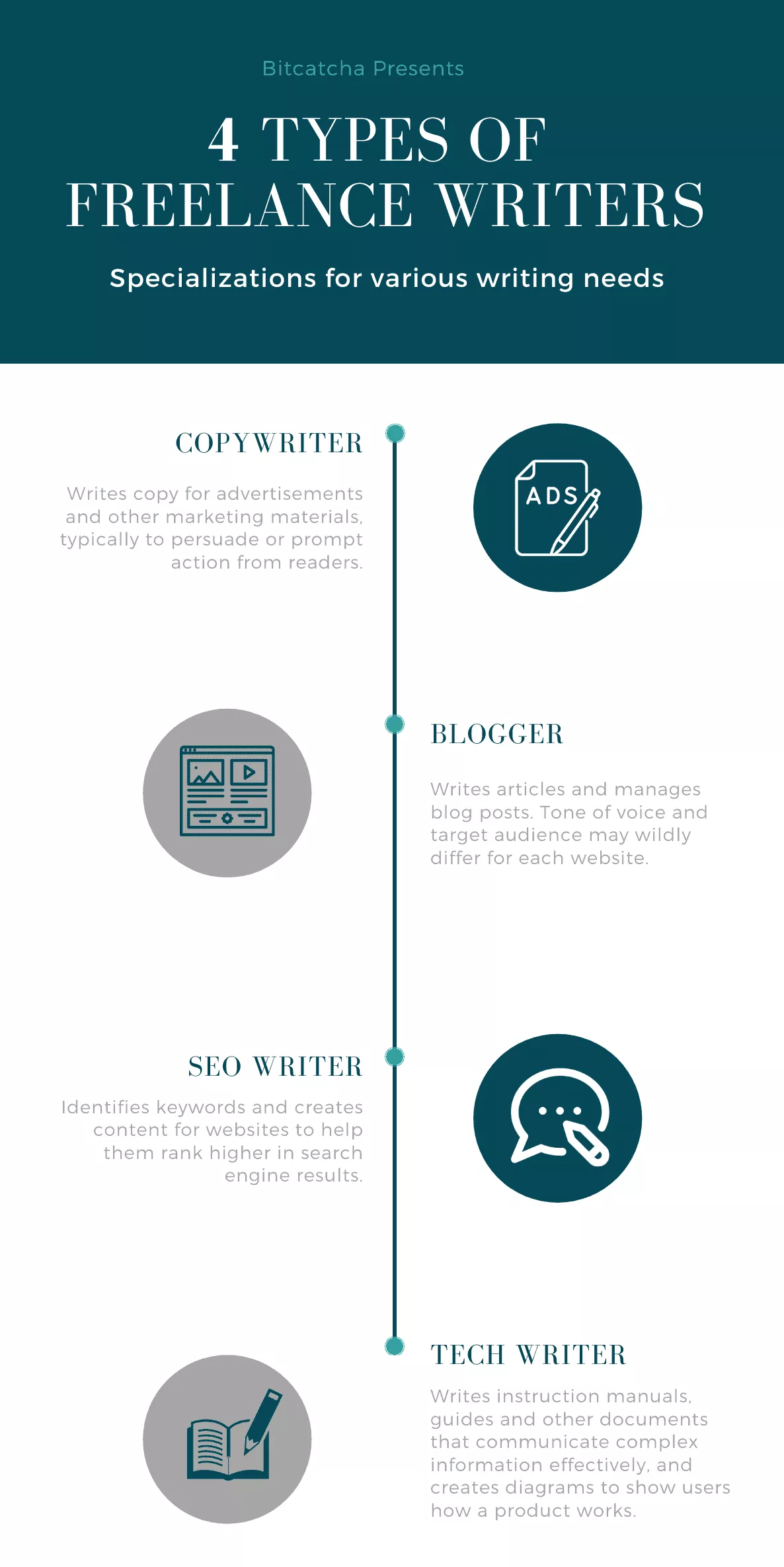
Hey there! I bet you’ve got quite a good gift of gab, since you clicked on this article.
Using that gift as a source of income is a great idea!
Freelance writers earn an average of 50 cents a word. So yeah, you could say a college essay is enough to pay for a room.
It’s definitely not as easy as it seems though. Don’t get me wrong, putting your gift of gab to work is easy.
It’s fun; lets you work flexibly and remotely and you get to learn and write about new topics. When it comes to getting paid for doing something you love to do, things feel easy.
The hard part is getting your first client.
From searching through freelance marketplaces for job posts to promoting your writing online, finding your first gig is a daunting task.
My early days of freelancing only consisted of *cough* extensive editing *cough*. gigs for my peers in college.
It took me about a year to land my first real contract. During this time, I wasn’t aware of freelance marketplaces, nor was I bothered to build a portfolio. That was a rookie mistake I regret making. I would’ve been able to score my first clients and get started on notable projects much sooner.
So here are some of the mistakes I’ve made along the way that you can learn from to score your first clients!

Old school RPGs used to force players to pick a class before they ventured out. They had to be either a warrior, thief or a wizard.
Like an old school RPG, before venturing into the world of freelance writing, you need to pick a specialization.
Here’s an infographic to explain these specializations.

As you can see, these specializations wildly differ from each other. Picking a specialization is an important step before venturing out. It gives you a target audience and niche to set yourself apart from the competition.
It is good to experiment with these specializations to see where your writing strengths lie.
Personally, I started off with tech writing. Long streams of informative texts in a professional tone, I thought my writing had reached its peak.
Until I went into copywriting and blogging.
“This long monotonous text is gonna put readers to sleep!” That feedback kept ringing in my ears as I unlearned and relearned writing all over again.
Now I am where I am today. As for tech writing… hmm… let’s leave that in the “another day” locker with leg day.
Anyway, the point is these specializations are the same in essence – written words. But, the execution and thought process is so different from each other, it’s like comparing apples to oranges.
Try to experiment and dabble around with the specializations to see which writing style resonates with you the most. With your own niche, you might even have your first client reach out to you!
Just as doctors and surgeons are required to have certifications, you do too. Your certification is your portfolio.
A portfolio is a compilation of your life’s work as a writer. It is usually the client’s main decision maker.
Because of this, many pros in the industry make sure their portfolios are as unique as possible.
However, don’t be discouraged. Portfolios are never grandiose in the beginning, it will take time to build yours. Even if it means doing some pro bono.
My first portfolio was a compilation of my college essays. I had to bulk it up with some guest posts for my actual first client.
Ramblings aside, how does one build a portfolio?
The most common portfolio beginners start off with is a blog.
Why a blog you say?
Because it’s your wooden sword, young samurai. A blog lets you train your writing chops as you get progress.
As passionate as we are, most of us don’t write every single day. Blogging encourages you to write more regularly. It gets your writing out to the public as you master your penmanship.
A blog portfolio also translates to presence. It makes it easier for clients to search up and contact you.
When you start doing guest posts, you’re going to be able to do some shameless self-promotion. Having your blog’s links on established websites is a fantastic way of getting clients to notice you.
Owning a blog portfolio is having tangible proof of your skills as a writer. Let’s be honest, when someone asks to read your work… Is it better to go through exchanging emails and sending a PDF, or telling them to check your blog?
Exactly! It’s easier and makes you seem more professional, with just a hint of swagger.
Overall, a blog is a great portfolio because it’s easily accessible to the public. It gives you a platform to promote your work and yourself. It makes you seem more professional to clients, and makes them more inclined to work with you.
Don’t know how to build a blog? We got you covered right here with an in-depth tutorial!
If blogging isn’t your thing and you want to try something else, there’s something even better – website portfolios. Here, you’ll set up a website (ideally with your name in the domain) and use it to showcase your best work in their best possible light.
There are so many great website builders that can help you set up a website in an afternoon, even if you have little tech knowledge.
If I were to talk about website portfolios right now, we’d be here all day. But stay tuned, I’ll be coming up with a special edition writeup on “all about portfolios” soon!
Doing guest posts is a great way to build up your portfolio. The downside is you usually can’t expect to pay the bills with what you’ll be earning.
A guest post is an article published by a website that isn’t from their own team of writers. Essentially, you’re going to be posting on someone else’s blog.
Your main goal for guest posting is to write for exposure. Brownie points if the website is a very reputable one.
Most websites welcome guest posters – you just need to send in an enquiry and details of your article. Emailing your favourite websites regarding having you as a guest poster would be a very beneficial move.
My first big guest post was a featured article in Health Today Asia. That accolade definitely made my portfolio look more professional at the time.
It wasn’t for the pay. More importantly, my subsequent (and first real) client reached out to ME instead. It was because he read my article and liked the style.
Once you’ve set up your portfolio, the next step is getting it out there.
If a tree fell and nobody was there to hear it, did it make a sound?
Even if you had the best portfolio ever, without anybody to see it, would you be able to get a client?
To score your first client, you must first show your portfolio to the world.
As kids, we would show our family drawings that we are proud of. It comes full circle when you start freelance writing.
The best place to start is at home. Ask your family and friends to spread the word for you, chances are they likely know someone in need of a writer.
I did this in college. After a few weeks, people started DM’ing me about heavily editing their essays. I was getting my first unofficial clients.
The word of mouth is a powerful tool. It is the biggest source of clients for freelancers, as reported by Medium.
Most clients want to do business with people they know — or recommended by people they know.
Surveys done by Nielson shows that 92% of people trust recommendations from friends and family over any type of advertising.
Most freelance writers are able to get their first gig through word of mouth when it travels far enough. So don’t be shy and ask your loved ones to support your new venture!
I bet $100 that anyone reading this right now has a social media account.
It goes without saying that marketing your portfolio on a few platforms will greatly help you get your first client.
The first thing to do is to create a business account for your writing only. By doing so, you’re also branding yourself. As long as you update frequently, more people will be introduced to and stay familiar with your work.
Other than promoting your portfolio on platforms, you can also increase your chances by proactively searching.
Consider joining freelance writing groups on Facebook, searching for contacts n’ contracts on LinkedIn, making posts for Instagram, etc, etc. You get the drill.
Sooner or later, someone will reply (maybe even reach out) to you for a writing gig.

There’s a trope about freelancers always working alone. There’s also a stereotype about writers preferring solitude.
Put those together, what does that make us?
Contrary to popular belief, freelance writers are not all hermits and recluses. The internet offers communities and a lot of support to us.
Slack groups, Reddit, even Discord, and much more. A quick Google search would lead you to a plethora of freelance writer communities to join.
Through these communities, you are able to network, ask for advice and improve the chances of attracting your first client.
If you are not aware of them, freelance marketplaces are websites that connect freelancers with clients.
Sites such as Fiverr and Upwork allows you to set up shop as a freelance writer almost immediately.
How does it work?
A freelance writer can sign up on these freelance marketplaces and promote themselves. They display their work on the profile, along with their rates.
When a client is looking for someone to work with, they will browse through the site’s freelancers profile to search for an ideal candidate.
Many new freelance writers will charge as low as $5 per project to add to their portfolios. You can think of it as almost the same as guest posting in that regard.
Scoring a gig in a freelance marketplace isn’t as smooth sailing as it may seem though. These sites have cutthroat competition.
You might be unlucky and find yourself competing with another freelancer charging low rates for their work. The difference is that they’ve already established an outstanding portfolio.
If you’re looking for a writer-centric freelance marketplace, there are sites such as Contently and Skyword that are entry-level friendly. These websites are great for honing your writing chops, and you might be paired with a big named client!
Other than functioning as job boards, Contently and Skyward can also be considered a portfolio, effectively killing two birds with one stone.
If blogging is your go to thing, you could try ProBlogger. The website is a job board specifically for writers. They regularly post ghostwriting and blogging contracts on the site.
Even without a portfolio, you might still be able to get a client on ProBlogger if you pitch a few posts and samples.
Ah yes, the dreaded cold pitch.
You’re only going to end up doing this under 2 circumstances. You either really REALLY want a specific client, or you’re looking for contracts that pay handsomely.
Cold pitching is arguably the most “difficult” method a freelance writer can use to score clients. Most choose not to do it, even with the potential for an attractive paycheck.
It is “difficult” in the sense that cold pitching requires you to go out of the way and contact potential clients. You’ll need to send somewhat personalized emails to companies and promote your services.
It is unlikely that you would get a response on the first try, many freelance writers send hundreds of emails before landing a contract. To reiterate myself, the paycheck is usually quite attractive.
Maybe us hermits really do dislike human interaction, and cold calling is the worst. But if you’re really keen on getting your first client, thick-skinned trial and error WILL net you a client.
When you’re emailing to promote your writing, your email also promotes your writing!
Let me clear up that visible confusion. Your email directly reflects your writing abilities as well. Sometimes a nice email is what a client needs to be sold.
Here’s a rough template of a professional cold pitching email for you.
I hope this email finds you well! I came across your company recently and loved what I saw. {Talk about their article/company and share an insight}. I am reaching out to see if you need someone to help with content.
My name is {your name}, and I’m keen to work with you guys! {Talk about who you are, your previous works and what your writing strengths are}.
I’ve attached some examples of my work in this email for further clarification. I hope to hear from you on how we might work together.
Thank you.
Best regards,
{Your name}
We offer you an early congratulations for getting your first client soon. As long as you keep these thoughts in mind, we have good news and great news!
The good news is that the hardest part is over. For now.
The great news is that getting your subsequent clients becomes much easier. Your portfolio will build, and it will garner more attention as you start taking on more gigs.
It will come to a point where you’ll have choices of projects you want to work on instead.
David is a content creator and freelancer. His journey started with writing songs, poetry and academic dissertations in Vancouver. David has freelanced for multiple companies around the world. Feel free to connect with him on LinkedIn.